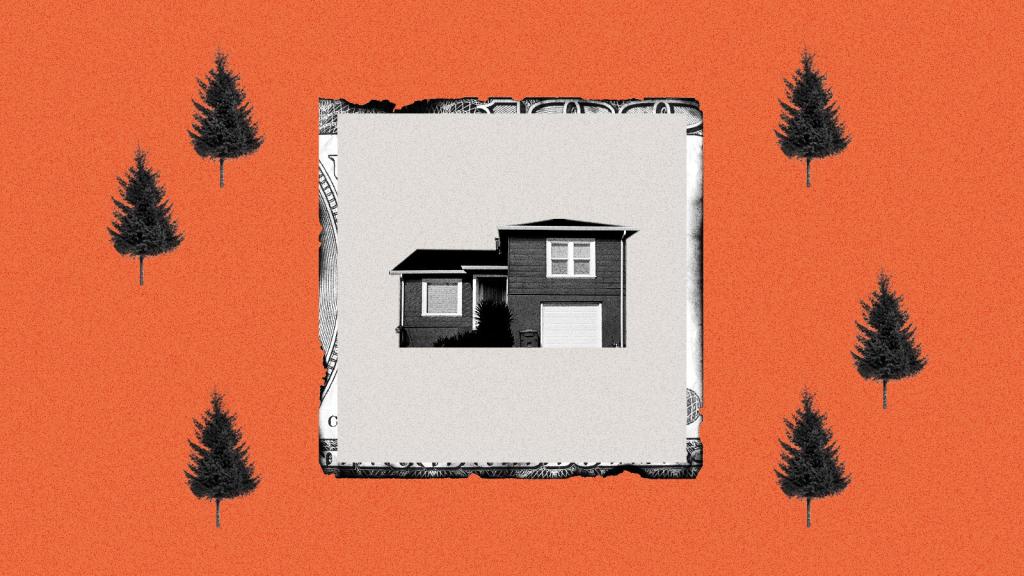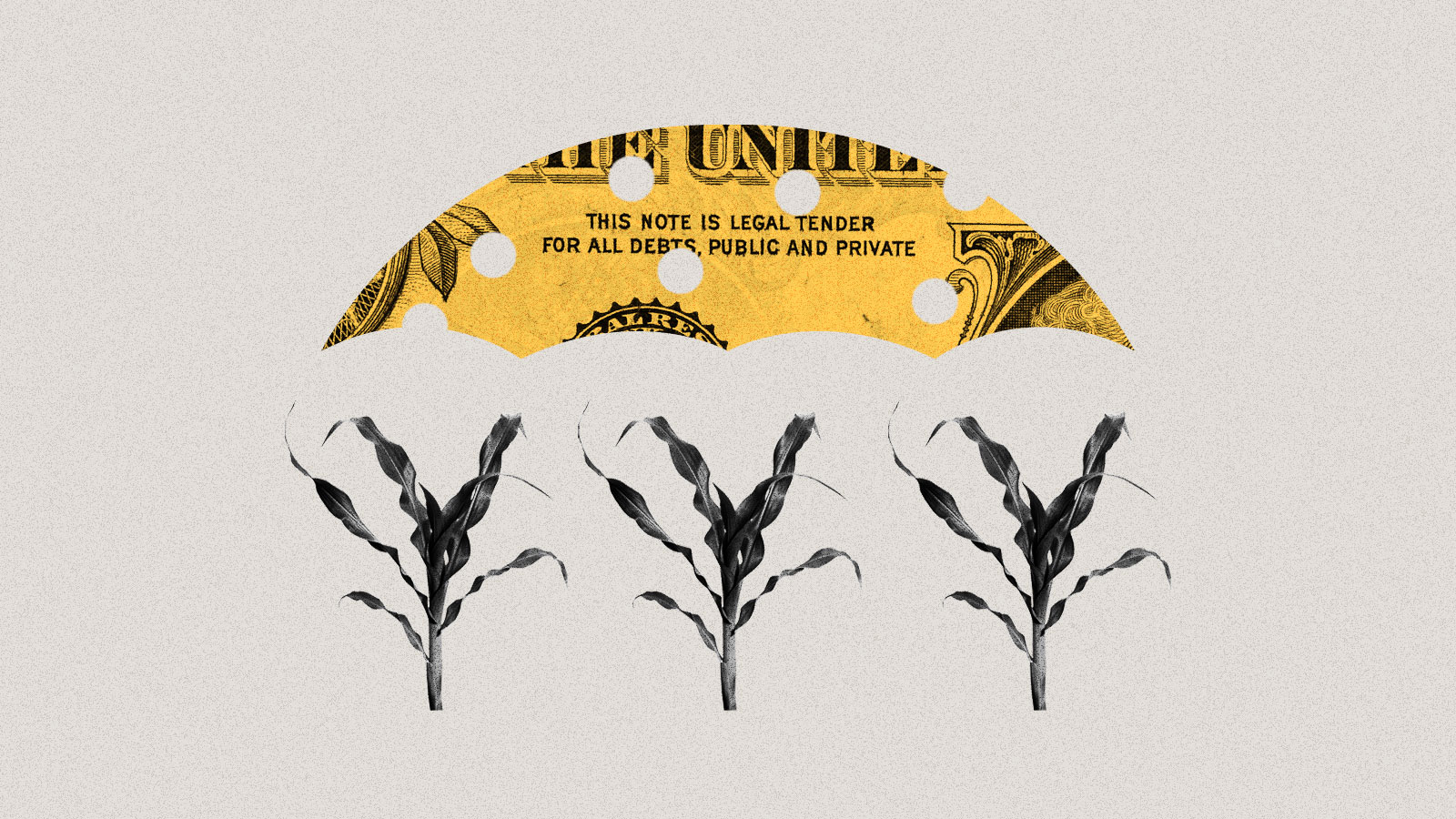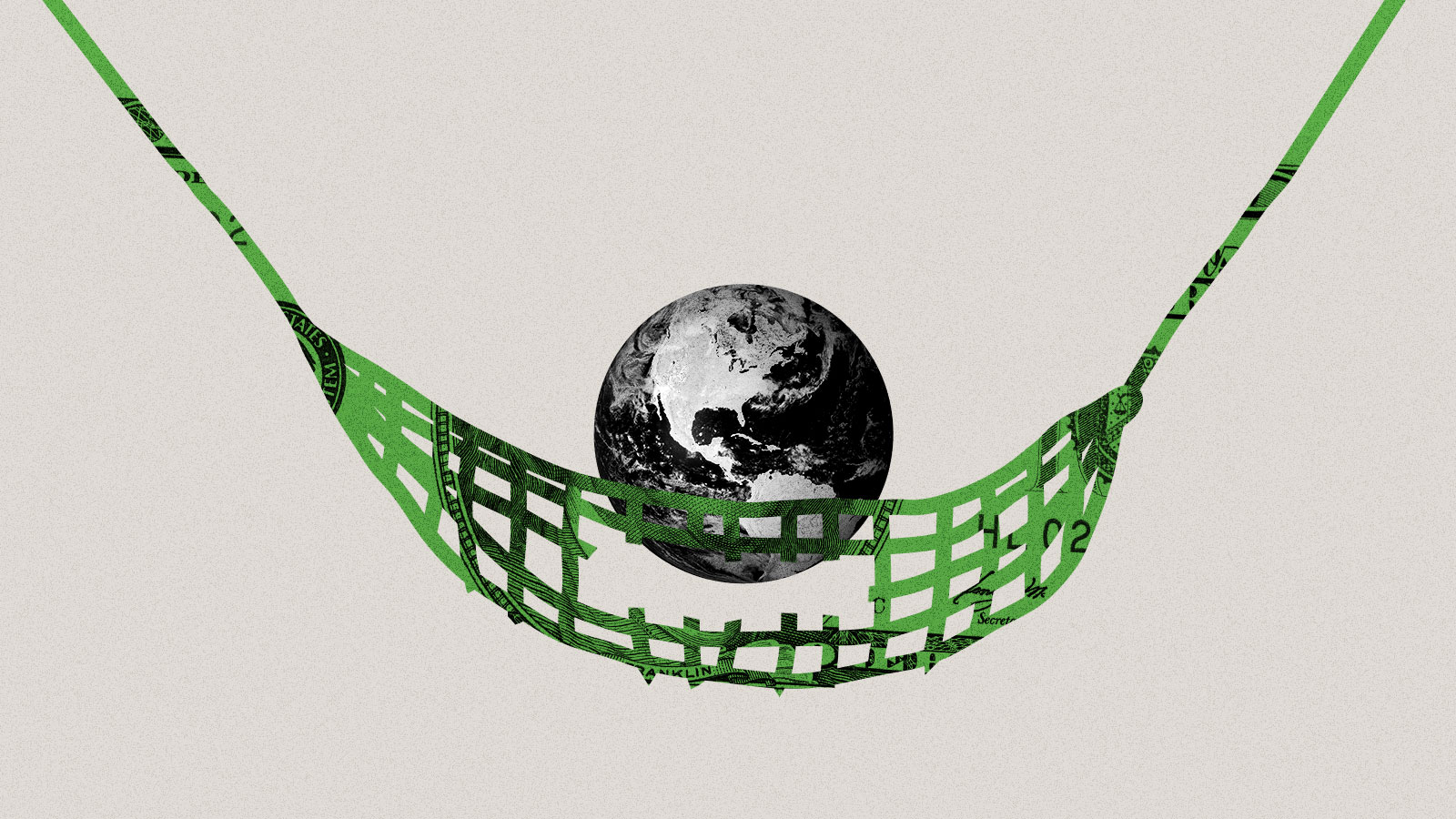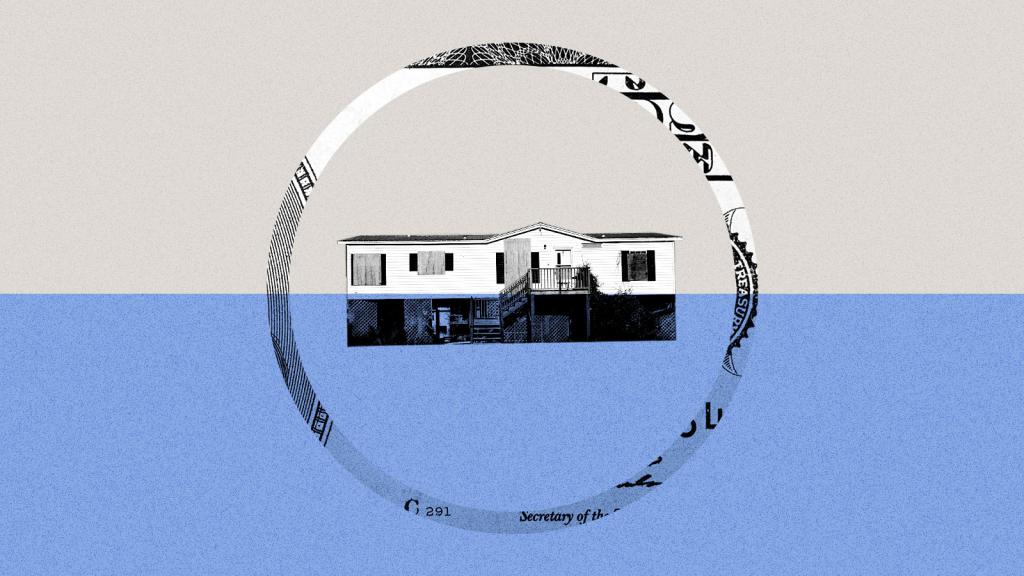This story is the last in a four-part Grist series examining how climate change is destabilizing the global insurance market. It is published in partnership with the Economic Hardship Reporting Project.
When David Marchant looked at the weather forecast in early July, he had a bad feeling. His 50-acre farm sits in the bend of the meandering Lamoille River in northern Vermont. He watched its banks warily as a steady downpour soaked the landscape. Soon, the river began to rise. By 7:30 the next morning, he and his crew were out in the mud, trying to harvest all they could save.
Two months’ of rain fell in two days. Despite their efforts, Marchant’s River Berry Farm quickly lost upward of 10 acres of crops, with lettuce and summer squash suddenly swimming in the flooded fields. He estimates the torrents cost him around $150,000 in just 48 hours.
The storm wiped out roads and bridges and inundated homes across the state. The catastrophe came at a particularly hard time of year for farmers to face disaster: In early summer, many are heavily invested in their season, but not yet able to harvest. The Vermont Agency of Agriculture, Food, and Markets estimates that the state’s food producers lost over $16 million as a result — somewhere between one-third and one-half of all the state’s yield.
As the climate changes, American farmers face a slew of new threats to their harvests and business models. More frequent floods and droughts can wipe out months of work overnight. Rising temperatures are expected to slow plant growth in the Northern Hemisphere within the next decade, while higher carbon dioxide levels reduce the nutritional value of fruits and vegetables. Altogether, a recent NASA study found that some yields could decrease 24 percent by as soon as 2030.
Research from the American Farm Bureau Federation suggests that nationwide, natural disasters caused $21.5 billion in agricultural losses last year. Only about half of those were protected by insurance, the majority of which is sold through federally-backed programs. Their payouts to farmers have increased over 500 percent in the last two decades.
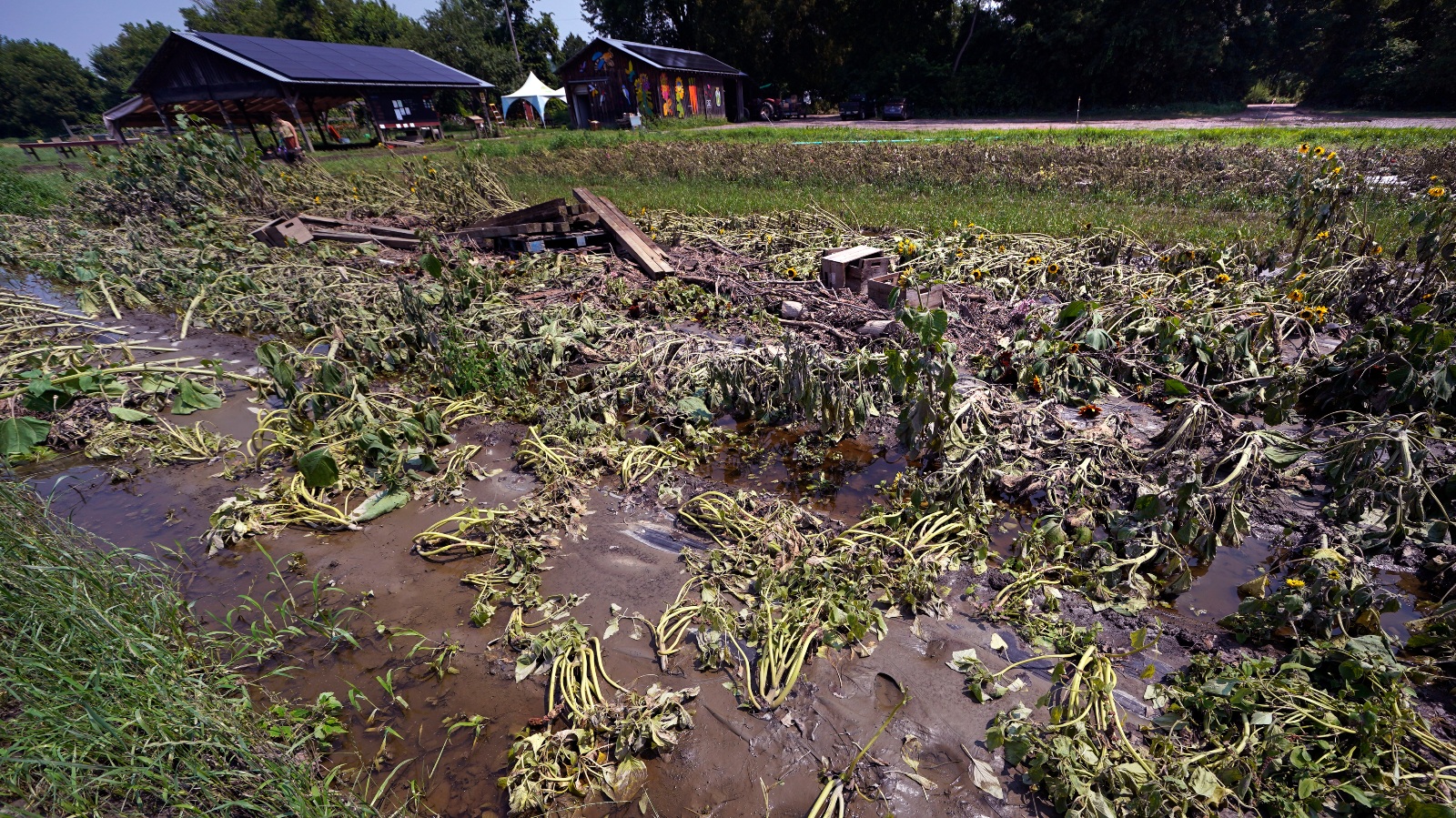
Back in 2007, a report from the Government Accountability Office, or GAO, called climate change a looming threat to insurance markets, and pointedly noted that while large private insurers were already incorporating it into their risk management, the two major federal insurance programs — for flooding and agriculture — ”have done little.”
That’s a problem not only for food security, but for the people growing the nation’s food. “I don’t think there is an appreciation of how significant the detrimental changes might be, because I think people are thinking things are already bad,” said Jeffrey Amthor, principal scientist at Verisk Analytics, a risk assessment firm that advises insurance and reinsurance companies.
Shortly before this summer’s flooding, Grace Oedel, the executive director of the Northeast Organic Farming Association of Vermont, was helping growers deal with hazardous wildfire smoke from Canada. Before that, a late spring freeze withered buds on apple trees and blossoms on blueberry bushes, costing Vermont farmers $10 million in lost production. The nonprofit has an emergency fund that food producers can apply to, and in the last few years, the organization has seen a surge in such petitions. “It just feels like nothing’s predictable,” Oedel said.
The financial stress this causes can be devastating: One recent study found 60 percent of farmers and their children are experiencing depression — about double the national average. Suicides within farm families are skyrocketing. “It’s definitely intensifying,” Oedel said. “The question is, how long can these farmers hold on before they get some kind of support?”
April 14, 1935, began as a sunny, spring Sunday in Kansas. But by afternoon, a dark cloud billowed over the horizon, so dense it obscured sunlight like an eclipse. It lashed across the plains at 60 mph. People suffocated, their lungs filled with dust. “The onrushing cloud, the darkness, and the thick, choking dirt, made this storm one of terror,” reported the Weather Bureau, now known as the National Weather Service.
The “black blizzard” was formed of displaced topsoil, becoming one of the worst of the Dust Bowl’s storms that drove hundreds of thousands of people off their land in search of other work. A lethal combination of destructive farm practices and an extended drought desiccated the region. In response, Congress authorized the Federal Crop Insurance Program, or FCIP, in 1938. No one was sure it would work. At first, the effort ran into the same hurdles private insurers had: Participation was low because rates were high, yet payouts still greatly exceeded premiums. At the time, the Christian Science Monitor asked, “Will the program become in effect an underwriting of high-risk areas which in fact ought to be retired from farming?”
Nevertheless, by 1980, the federal government decided to bolster its support for crop insurance, eliminating an overlapping disaster payments program. As part of the Federal Crop Insurance Act of 1980, the U.S. Department of Agriculture, or USDA, authorized a small number of private companies to sell these policies, while heavily subsidizing their cost. Today, taxpayers cover about 60 percent of these premiums, more than ever before.
If weather reduces an enrolled farmer’s yield or revenue from a particular crop, the FCIP will issue indemnity payments, essentially guaranteeing a set amount of income. Most of those subsidies are going to commodity crops; corn, soybeans, wheat, and cotton have received 75 percent of all payments in the last two decades. “It’s really concentrated to just a few states, and also just a few crops,” said Anne Schechinger, Midwest director at the nonprofit Environmental Working Group, which recently published a report on crop insurance.
While these average yields are supposed to be set by looking at a grower’s historical output, in practice, bad years are frequently excluded from those calculations, said Schechinger. “That’s something we see a lot in California, Texas, Oklahoma,” she said. A provision called Actual Production History Yield Exclusion allows farmers to ignore up to 15 bad years when calculating typical yields, falsely raising insurance payouts. This misrepresentation is highest in the southern Great Plains — the same region that experienced the worst consequences of the Dust Bowl.

The FCIP will also pay the same farmers for the same kinds of losses year after year — and it often does. One hotspot for claims is the Mississippi River Critical Conservation Area, a USDA-designated area across 13 states. It has accounted for $1.5 billion of federal payments from flood damage since 2001, which Schechinger says could have instead been used to transition more 300,000 acres of frequently inundated land out of production. Forty unlucky counties, primarily in the Corn Belt, received payouts for losses related to both drought and extreme precipitation every year for the last two decades. Failing to account for these risks in insurance policies raises the chance that today’s potential solutions will become insufficient.
Critics say the crop insurance program is now actually deterring climate adaptation by minimizing the true costs of growing in places that have become unsuitable. In some cases, federal crop insurance is also actually making climate impacts worse: As groundwater declines across the Midwest, for example, farmers may risk losing coverage if they take steps to conserve water, since irrigated crops receive higher payouts. This highlights the need for urgent reforms in the next farm bill, legislation passed approximately every five years that addresses the United States’ agriculture and food systems. “We know the last 20 years aren’t the next 20 years,” Schechinger said.
Last year, federal crop insurance payments topped $19 billion — the highest since 2001, when current subsidy levels were set. (A USDA spokesperson told Grist, “The total amount of losses has increased during that time, but so has the program’s size.”) According to several reports from the GAO, the share of the total costs paid by taxpayers has also increased.
Yet a third of all subsidies for the FCIP are now being paid out not to farmers, but the private companies that sell and service its policies — many of whom are large corporations. In addition to their administrative costs, these companies earn a 14.5 percent return from the government, much higher than similar industries, like property insurance. Reducing that overhead rate could free up financing for the growers who need it most.
This could expand other federal programs like the Whole Farm Revenue Policy, which insures the revenue of all the commodities on a farm, making it more accessible to the kinds of small, diversified operations that grow for farmers markets. “It’s a great policy, but it’s not subsidized as highly,” said Schechinger, “so not that many farmers use it.” She adds that insurance agents are typically compensated based on the value of the premiums they sell, incentivizing them to sell more expensive policies to larger players. The USDA introduced a “Micro Farm” program in 2022, which is intended to be a better fit for small operations, but nationally, there have only been 120 such policies sold so far.

Watchdog groups like GAO have long criticized the crop insurance program’s poorly managed approaches — like propping up water-intensive cotton growers in the Southwest desert — but clearly the risks to farmers are also rapidly increasing. Hundreds of cattle died this summer in Iowa as the heat index climbed to 117 degrees Fahrenheit. In addition to extreme temperatures, ongoing drought continues to plague much of the Midwest’s breadbasket. According to recent research from Stanford University, climate hazards have increased annual crop insurance losses by about $1 billion every year since 1991.
The threat of such catastrophes now looms over agriculture across the country. As sweeping changes start to alter what food can be produced where, Schechinger says Congress needs to “really reevaluate how we’re doing business as usual.”
The next farm bill, though its timing is uncertain due to a looming government shutdown, will determine federal agriculture policy for the next five to 10 years. It is expected to be the most expensive in the country’s history. “We choose how we subsidize everytime we make a farm bill,” Oedel, of the Northeast Organic Farming Association of Vermont, said. “That is a policy choice, not a reality about how food has to grow.”
As dawn rises over a field of corn in Illinois, light beads off the collected dew, the horizon stretching out over the rippling stalks. That precious, twinkling moisture is the reason daytime summer temperatures have so far remained fairly stable across the Midwest, “counter to almost everywhere else on the planet,” said Verisk’s Amthor. He recently conducted a report looking at the impacts of climate change on the region’s yields of this commodity. To his surprise, he found that plants in the rolling, endless rows across the Corn Belt are drawing water from the soil and releasing it as vapor at such a scale that it is actually helping keep surface temperatures cooler. This has shielded the area from the poor harvests other places are already facing.
But as the mercury continues to rise, this natural air conditioning won’t be able to keep compensating. “If the Midwest catches up, and it does that in a rapid way, I think we probably don’t appreciate how significantly and negatively that might impact the Midwest,” he said. The U.S. is the world’s largest producer and exporter of corn, so this could have global consequences.
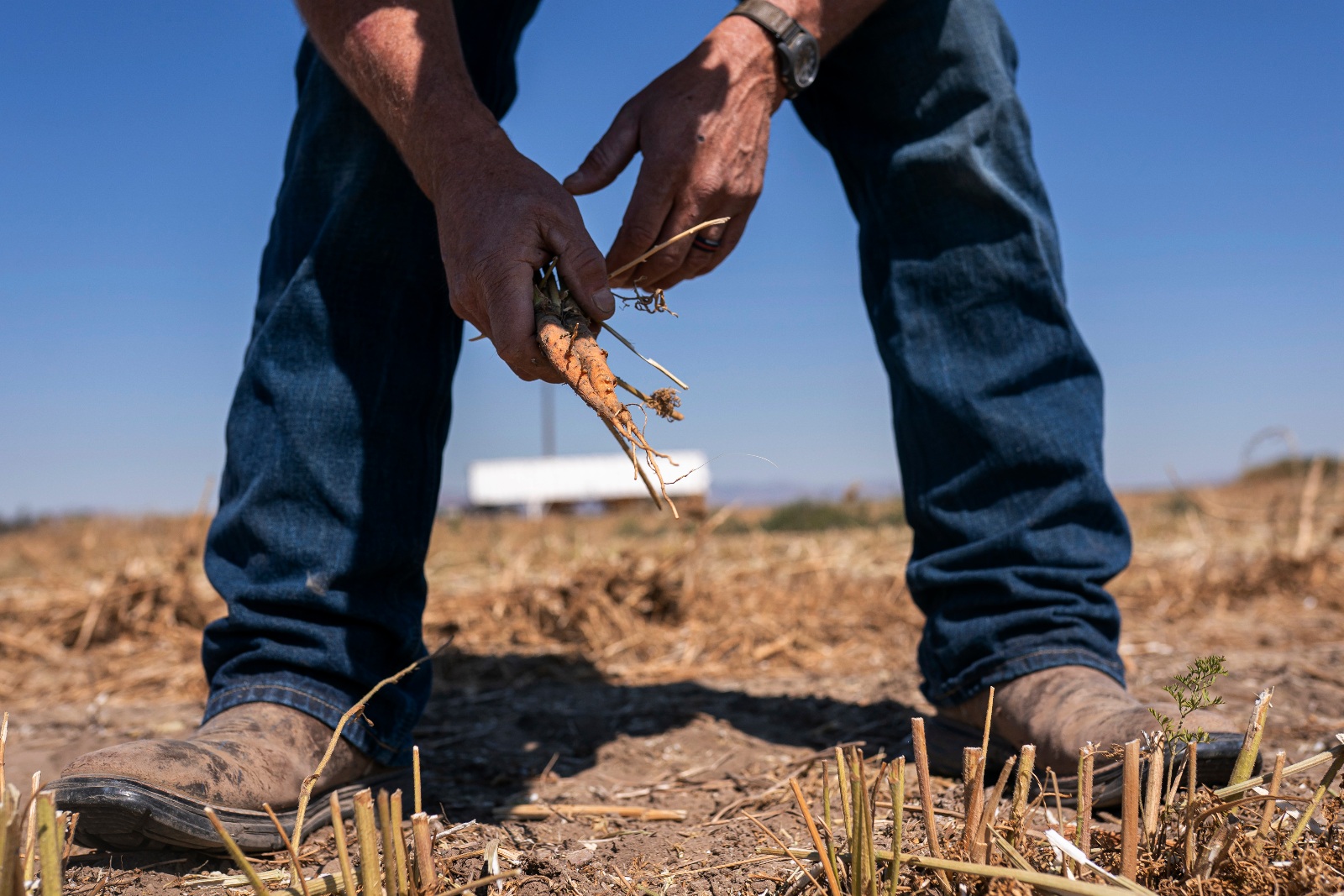
The more we can do to slow down these changes, the easier it will be to adapt, Amthor says. It takes time to breed new genotypes of plants that might be able to better endure heat, or bring new technologies into the field. That kind of tinkering is something farmers naturally excel at, says Rich Bonnano, a fourth-generation farmer who’s now the director of the North Carolina State University Extension program. It is, in a way, a form of insurance separate from the traditional financial systems. “I think about avoiding risk all the time,” he said. “You can’t stop a hurricane, but maybe some varieties can handle wet roots and standing water.”
In addition to breeding resilience into crops, Bonnano’s family’s experience suggests that diversifying crops provides its own form of insurance. Much of their 50 acres in Methuen, Massachusetts, flooded in 2006, drowning several plantings of lettuce and spring greens, and ruining acres of plastic mulch and drip irrigation. It cost Bonnano, who was uninsured, an estimated $60,000. He then discovered that agriculture isn’t eligible for the disaster relief loans available for small businesses. “We got nothing,” he said.
But Bonnano had carefully planned a variety of crops to handle exactly that kind of risk. He was able to replant some of his cool season vegetables, including leaf lettuce and other greens. Warm season vegetable starts like peppers and eggplants were still safely in greenhouses, and flowers rounded out his end-of-summer income. “We didn’t have our eggs in one basket,” he said. At the end of the year, the farm’s revenue was only 10 percent less than the previous year. “The more diversified you are, the more you’re able to handle this year-to-year variability,” he explains, even without an insurance policy.
In Vermont this summer, Marchant’s similarly wide-ranging plantings also helped him recover. “We are naturally insured with our diversity,” he says. He had previously looked into the Whole Farm Revenue Policy, and found it too expensive. But he had enrolled in the USDA’s Non-Insured Crop Disaster Assistance Program, which, despite its name, functions a lot like insurance: When enrolled farmers lose more than 50 percent of an expected crop, it begins paying for those losses at 55 percent of their market value, with higher electable coverage for an additional price. This won’t necessarily cover all of his damage, Marchant said, “but the [upfront] cost is incredibly cheap.”

The disaster assistance program is run through regional governments, in Marchant’s case, Franklin County. Its agents were more familiar with dairies, and in assessing his damages initially thought “lettuce was lettuce,” he said. “Well for us, lettuce is 17 different plantings,” including multiple varieties. He says the county had a “steep learning curve” to handle specialty vegetables, as it needs data on typical crop yields to determine pricing. “It takes a while to build all that, but they are getting better.”
In the meantime, many of his neighbors remain uninsured, due to the systematic gaps that persist for small farmers. In the absence of official coverage, some are turning to crowdfunding platforms like GoFundMe. Following a disaster, such crowdsourcing is at least more immediate, Marchant adds. “You get the money quick,” he said. “It takes forever for the government.”
But such efforts come with complications. Despite their potential, most campaigns fail to meet their goal. Furthermore, receiving funds for specific needs like flood damage can adversely impact eligibility for assistance from the Federal Emergency Management Agency, or FEMA. (Farms themselves are not eligible for FEMA aid, but residential repairs often are.)
As the growing season draws to a close in Vermont, insurance adjusters await soil testing results, and to see which crops might have recovered from the year’s disasters. The federal government eventually declared Vermont a natural disaster area, making its farmers eligible for expanded low-interest loan programs through the USDA. But that doesn’t really help, Oedel says. “Frankly, nobody wants to take on a loan when they’re already extremely in debt.”
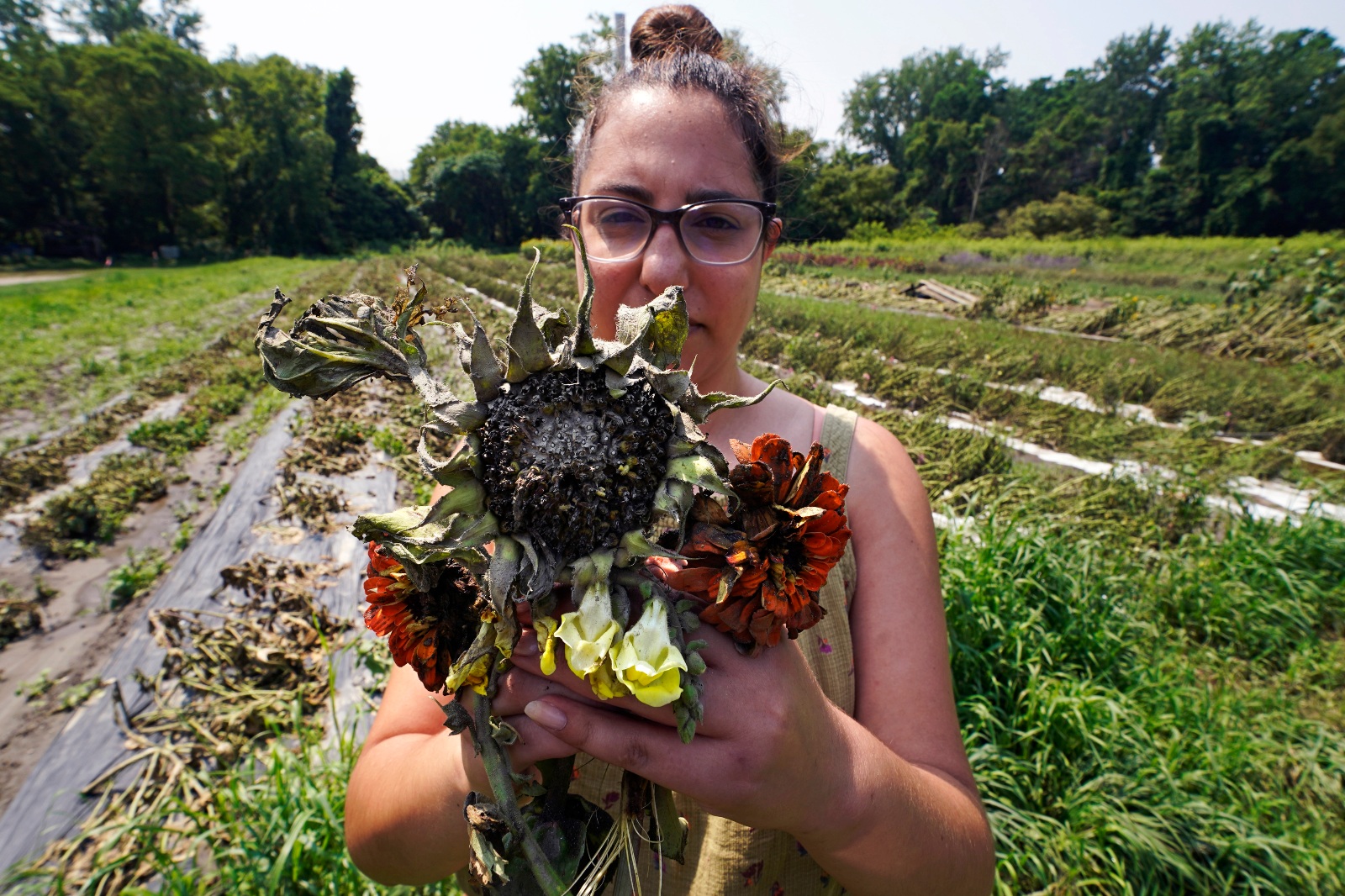
Instead of incentivizing farms like Marchant’s — whose organic approach has been shown to reduce greenhouse gas emissions, improve soil carbon sequestration, and support biodiversity — government support continues to leave out the very farmers who could help improve climate resilience.
As severe weather becomes the norm, the damage of these disasters is usually tallied individually. But when Vermont’s floods were followed by a record-breaking hurricane hitting California’s vegetable farms, which grow a third of the country’s produce, even as a drought shrivels wheat fields across the Midwest, the effect is larger than the sum of its parts. “This flood is not like a ‘flood and done’ experience,” Oedel said. “The economics of it do not work. And that’s really scary.”
Even if your hometown is lucky enough never to be hit by a major catastrophe, our food system is becoming increasingly brittle — and agriculture insurance programs are failing to keep up.
